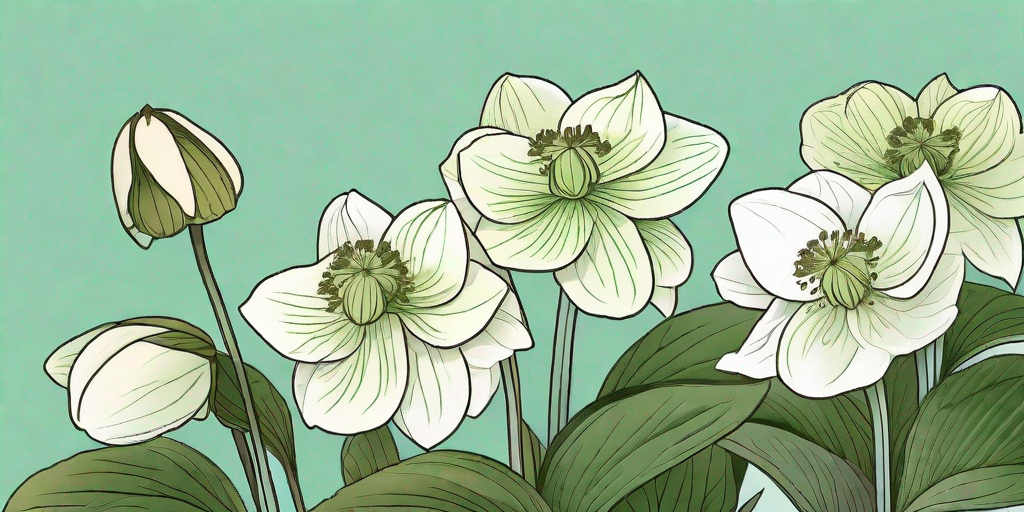
Hellebores, also known as Christmas roses or Lenten roses, are the unsung heroes of the winter garden. While other plants are hibernating, these hardy perennials are busy showing off their vibrant blooms, adding a splash of color to the otherwise bleak landscape. But how do you grow and care for these winter wonders? Well, buckle up, green thumbs, because we're about to embark on a horticultural adventure.
Understanding Hellebores
Before we dive into the nitty-gritty of hellebore care, let's take a moment to appreciate these botanical beauties. Hellebores belong to the Helleborus genus, which comprises about 20 species of perennial plants. They're native to Europe and Asia, but they've managed to charm gardeners worldwide with their resilience and beauty.
What sets hellebores apart is their timing. While most flowers wait for spring to strut their stuff, hellebores are winter bloomers, flowering from late winter to early spring. Their blooms come in a variety of colors, from pure white to deep purple, and their leathery leaves stay green all year round, making them a great choice for adding some winter interest to your garden.
Planting Hellebores
Now that we've waxed lyrical about hellebores, let's get down to business. How do you plant these winter bloomers? Well, it's not as complicated as you might think.
First, you'll need to choose the right spot. Hellebores prefer a well-drained soil in a location with partial shade. They're not big fans of extreme weather, so try to find a spot that's sheltered from harsh winds and scorching sun.
Once you've found the perfect location, it's time to get your hands dirty. Dig a hole that's about twice as wide and just as deep as the root ball of your hellebore. Place the plant in the hole, making sure the top of the root ball is level with the soil surface, then backfill the hole and water thoroughly.
Choosing the Right Soil
Hellebores are pretty forgiving when it comes to soil type, but they do have their preferences. They like a rich, well-draining soil with a pH between 5.5 and 6.5. If your soil is on the sandy or clayey side, you can improve its texture and fertility by adding some organic matter, like compost or well-rotted manure.
And remember, hellebores are deep-rooted plants, so it's a good idea to prepare the soil deeply. A little extra effort now will pay off in the long run with healthier, happier plants.
Watering and Feeding
When it comes to watering, hellebores like a Goldilocks approach: not too much, not too little, but just right. They prefer a consistently moist soil, but they don't like waterlogged conditions. So, aim to keep the soil damp, but not soggy.
As for feeding, a top-dressing of compost in the autumn should keep your hellebores happy. If you want to give them an extra boost, you can also apply a balanced, slow-release fertilizer in the spring.
Caring for Hellebores
Once your hellebores are in the ground, they're relatively low-maintenance. But there are a few things you can do to keep them looking their best.
Firstly, keep an eye out for pests and diseases. Hellebores are generally pretty robust, but they can sometimes be bothered by aphids, slugs, and black spot. Regular inspections and prompt action can help keep these problems in check.
Secondly, consider giving your hellebores a little trim in late winter. Removing the old leaves just before the new buds emerge can help prevent disease and make the flowers more visible. Plus, it gives you a great excuse to get out in the garden and enjoy the crisp winter air.
Propagation
If you're smitten with hellebores and want to spread the love, you're in luck. Hellebores can be propagated by division in early spring or by sowing seeds in late spring or early summer. Just be aware that seed-grown hellebores can take 2-3 years to flower, so you'll need a bit of patience.
But trust us, when you see those first blooms, it'll be worth the wait.
FAQs
Are hellebores toxic?
Yes, all parts of the hellebore plant are toxic if ingested, so they're best kept out of reach of children and pets. On the plus side, their toxicity makes them deer and rabbit resistant, so they're a great choice if you're looking for plants that won't become a wildlife buffet.
Can hellebores be grown in pots?
Absolutely! Hellebores make excellent container plants, as long as you provide them with a well-draining potting mix and protect them from extreme weather. Just remember that potted hellebores will need more frequent watering than their ground-dwelling counterparts.
Do hellebores need a lot of sun?
Not really. Hellebores are woodland plants by nature, so they're quite happy in partial shade. In fact, too much sun can scorch their leaves and fade their flowers, so it's best to give them a spot with some dappled shade.
Conclusion
And there you have it, a comprehensive guide to growing and caring for hellebores. These winter bloomers may not be as flashy as some other garden plants, but their resilience and beauty make them a worthy addition to any garden.
So why not give hellebores a try? With their vibrant blooms and evergreen leaves, they're sure to brighten up your winter garden and put a smile on your face, even on the coldest of days.















